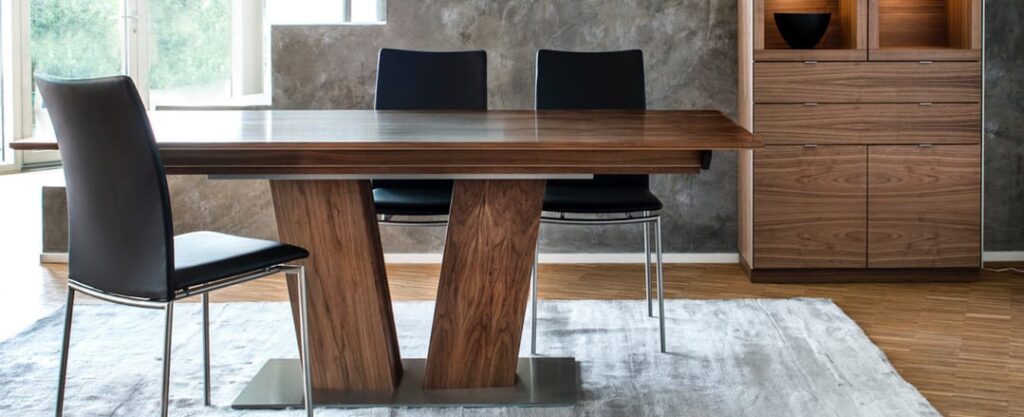

Wood furniture has a timeless appeal and comes in a huge variety of tones, colors, and textures. If you are thinking about buying a piece of wood furniture, we’ve put together a guide to the most common types of wood and finishes to help you choose:
Walnut: Historically, walnut is one of the most predominant woods used in fine furniture. One of the reasons for this is that walnut has a beautiful, striking grain with warm, rich color. Because of the variegations in its grain, each piece of walnut furniture has its own unique feel, as no two pieces of walnut will look exactly alike. For this reason, craftsmen turn to walnut to give a piece of furniture unique character.
Teak: Teak has a beautiful spectrum of shades and can range from dark to almost golden-yellow. Beyond its looks, teak is also extremely durable and is one of the strongest and hardest of the hardwoods. Its durability means that a piece of teak furniture is going to last a lifetime, requiring very little maintenance. In fact, teak is so resistant that it is often used in outdoor furniture as well.
Oak: Oak has a light, maple color with a distinctive grain pattern. It is a commonly found material in modern day furniture-making, where it is often treated to make the grain stand out even more. Oak is also sturdy and durable, and because it takes varnish well, it can be maintained for many years. Oak furniture often has a rustic, natural appeal.
Rosewood: An elegant and favored material for fine furniture, rosewood has a rich, dark color that can range from brown to almost purple. Its grain is often characterized by black streaks. Similar to mahogany, rosewood is a hardwood that is treated and seasoned before it ever sees any kind of other treatment, giving it a rich color.
Varnishes: Made from synthetic resin, varnishes are tough and give wood furniture extra durability. Similar to oil, varnishes cure on the wood through a process known as polymerization. A good varnish will make wood resistant to most elements, chemicals, and even solvents.
Lacquers: Lacquers bring out the rich color of the wood while giving it some protection and increased durability. While lacquer might not protect the wood as much from heat or solvents compared to varnishes, it makes up for the fact in the richness it gives the wood.
Oils: Oils (such as linseed or tung oil) strengthen wood through polymerization. Unlike varnishes, however, oils work their way down into wood. Because of this, the surface of the wood retains its natural texture, as the film created by the oil is thinner compared to other finishes.